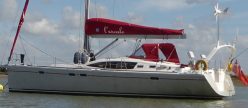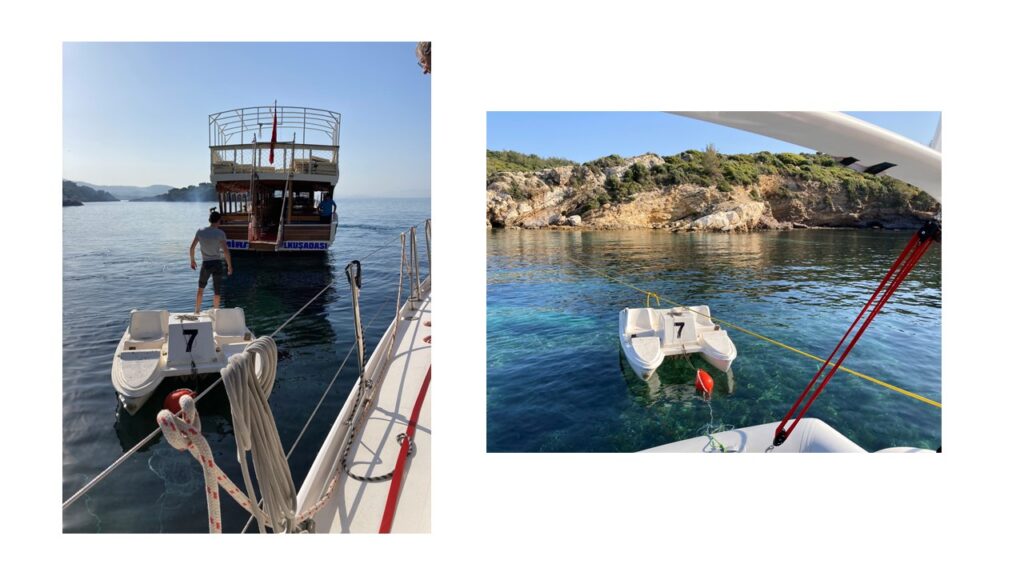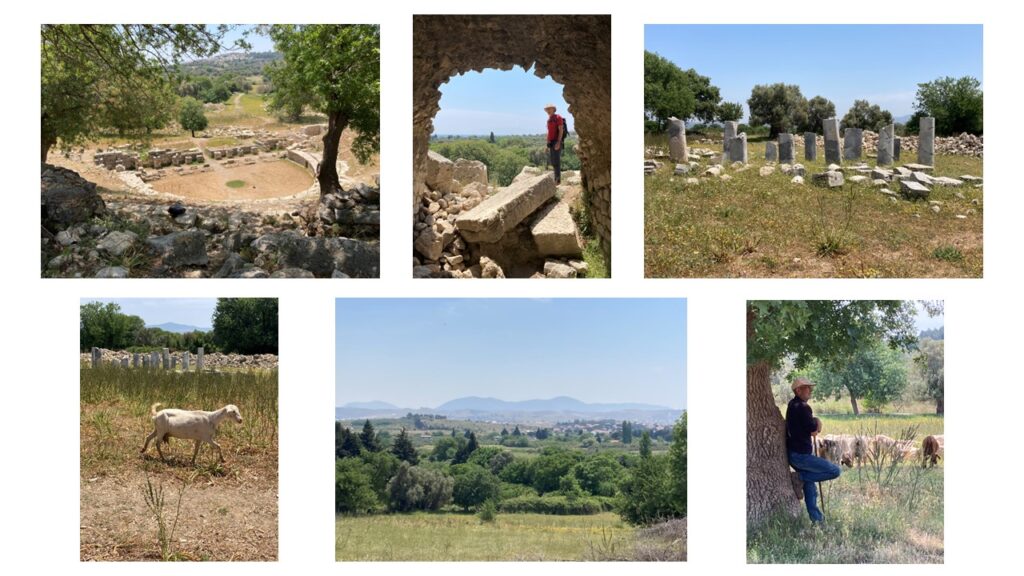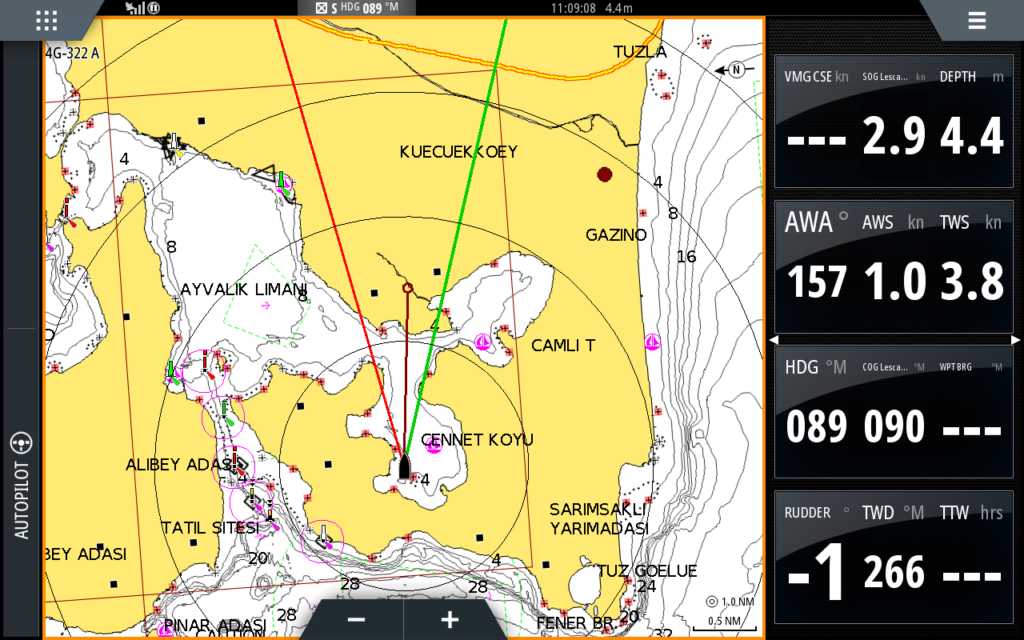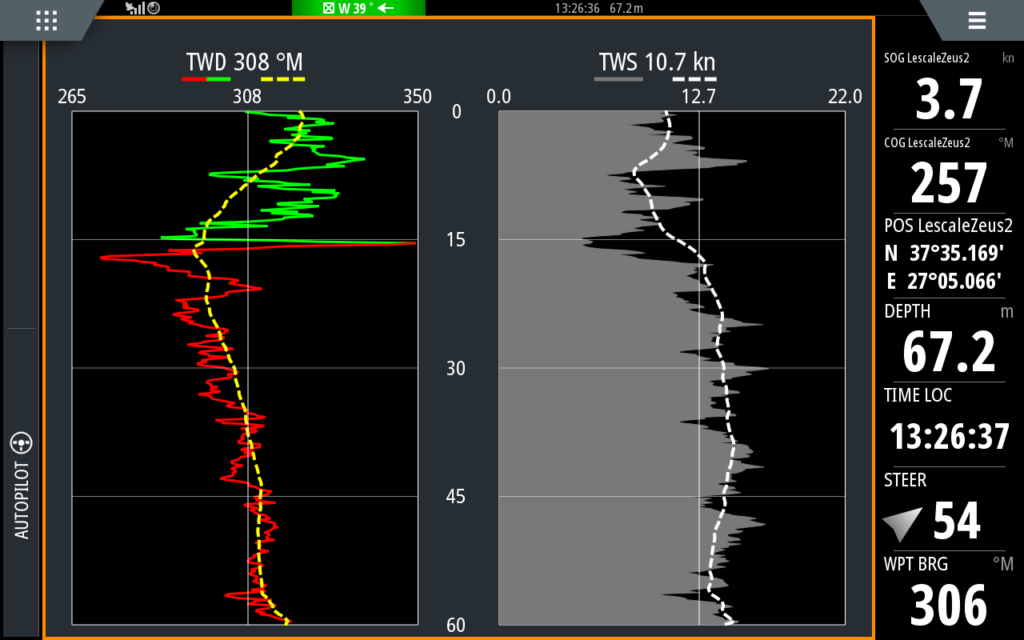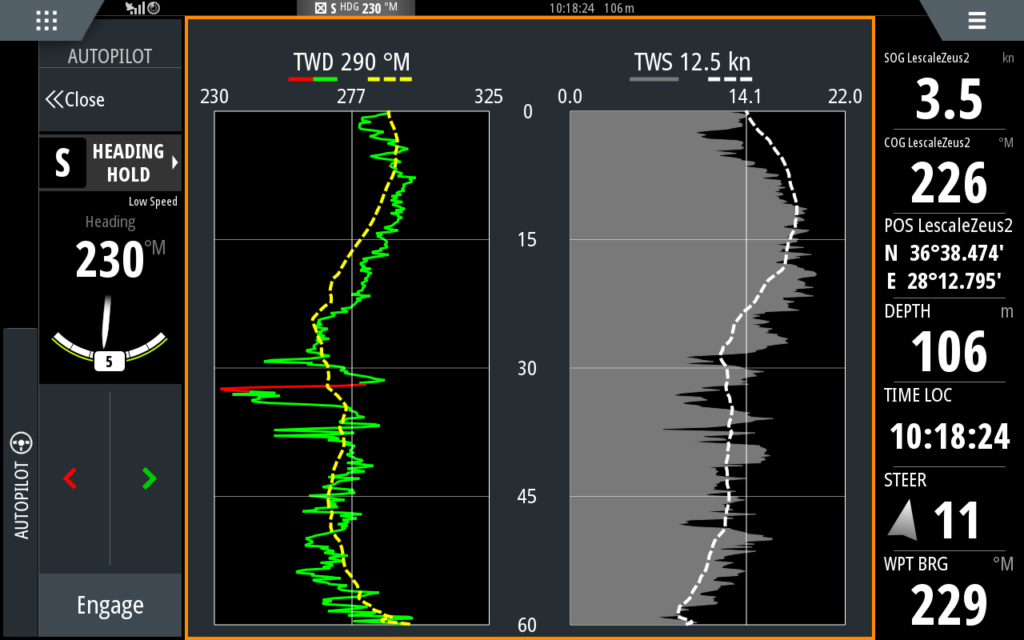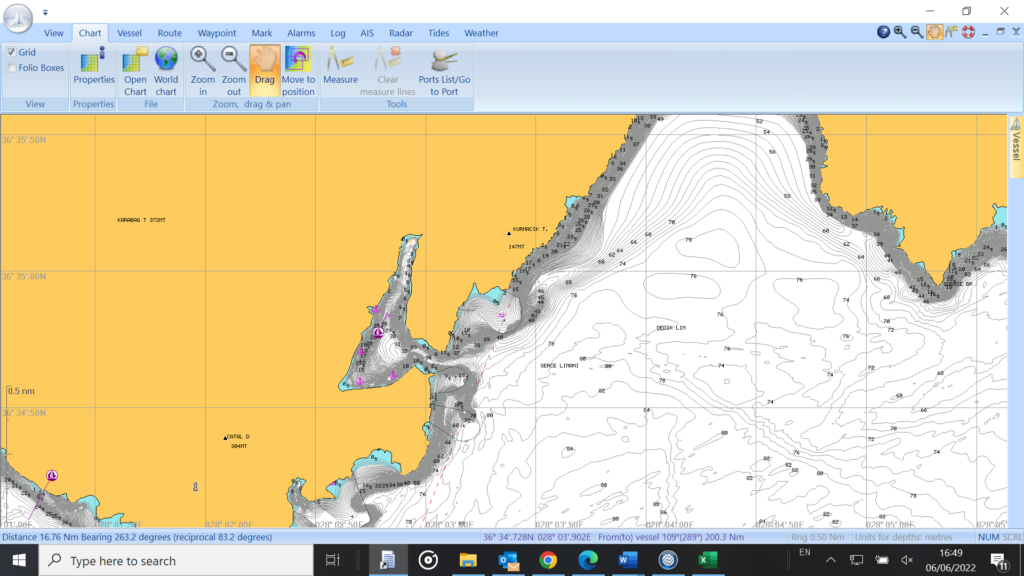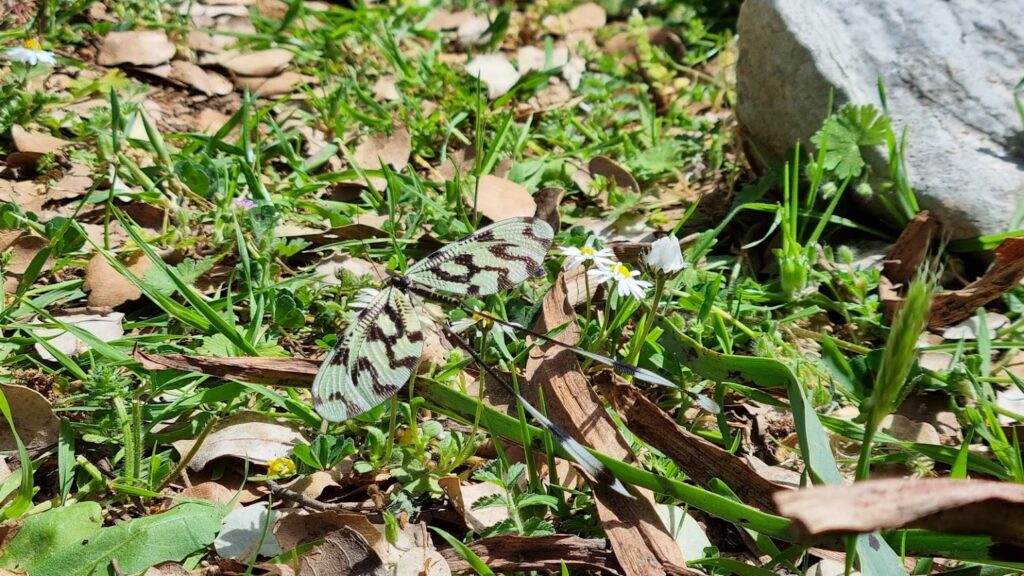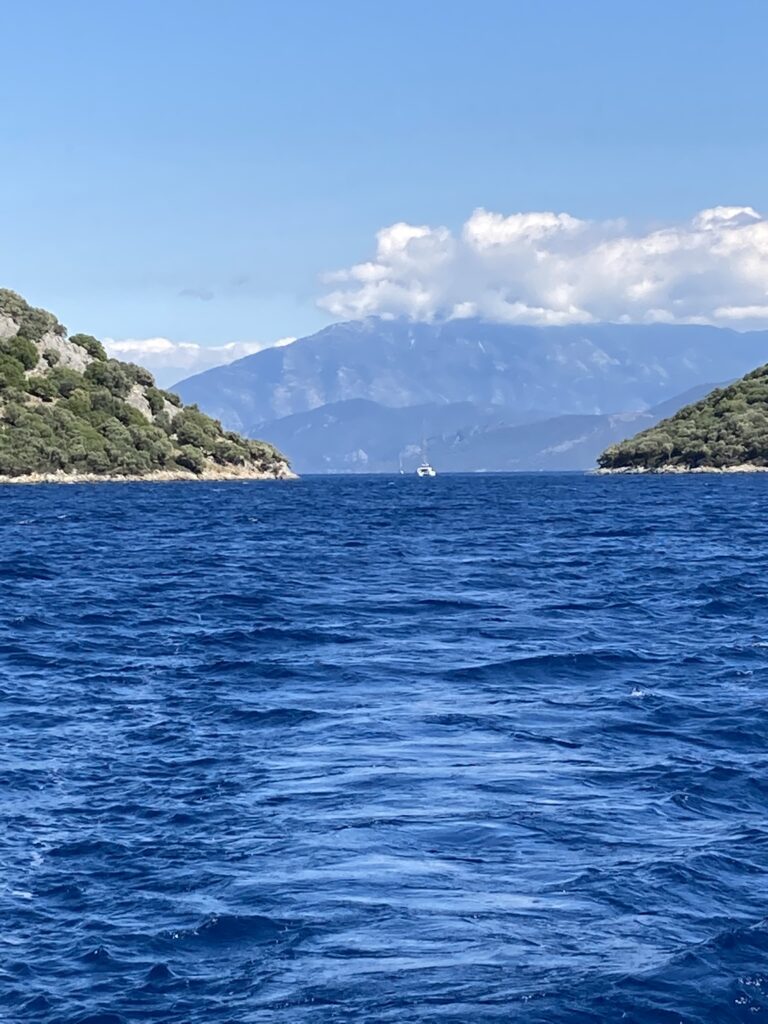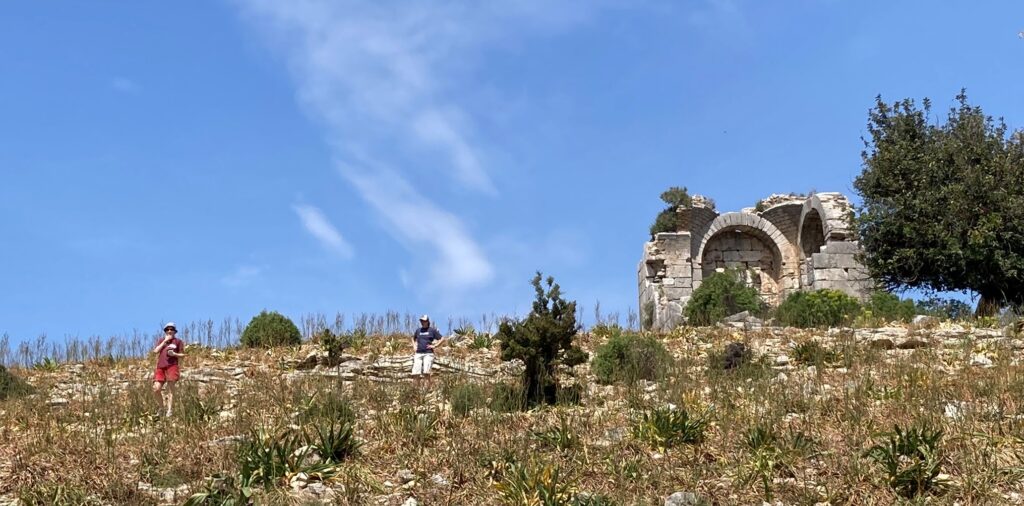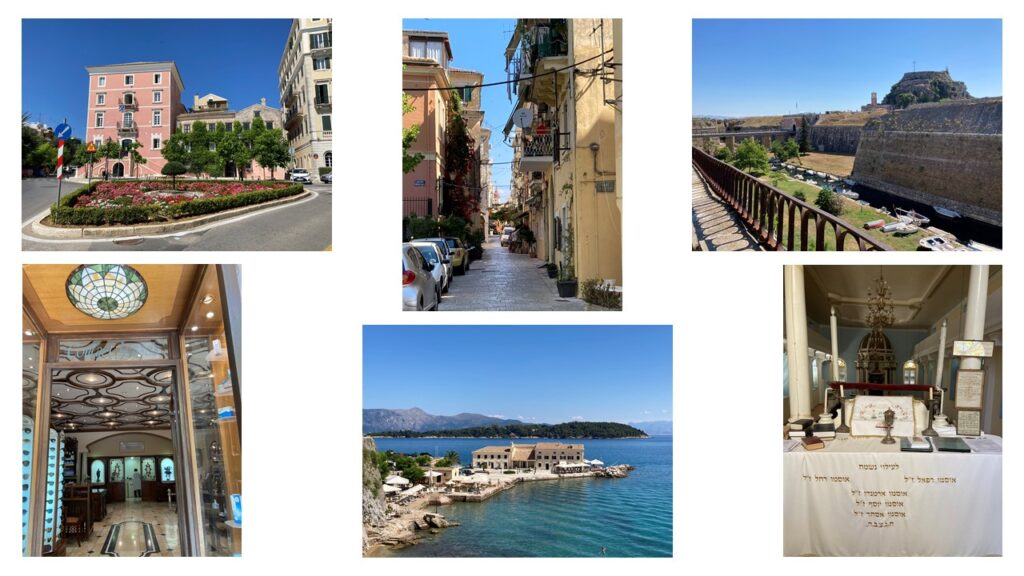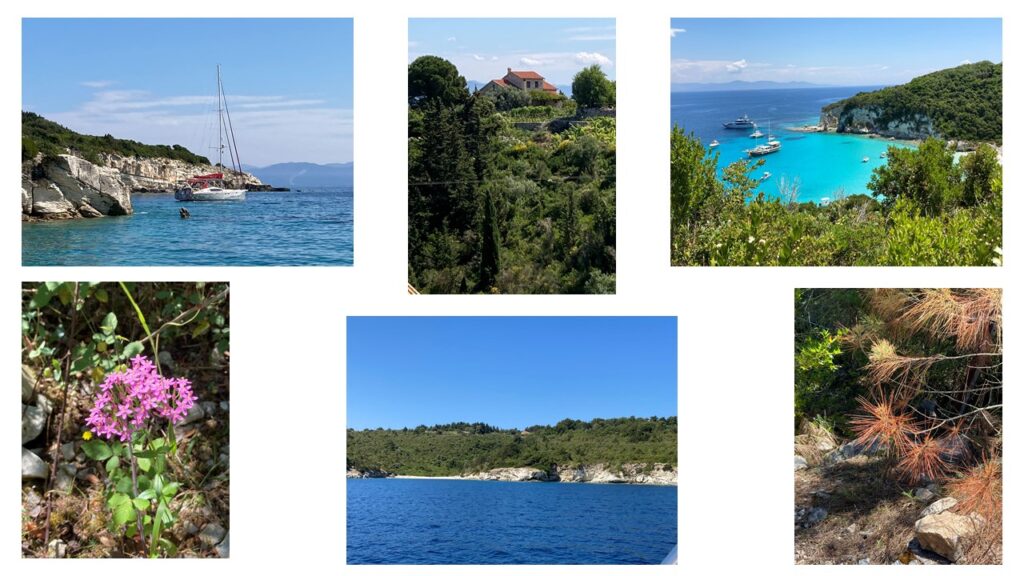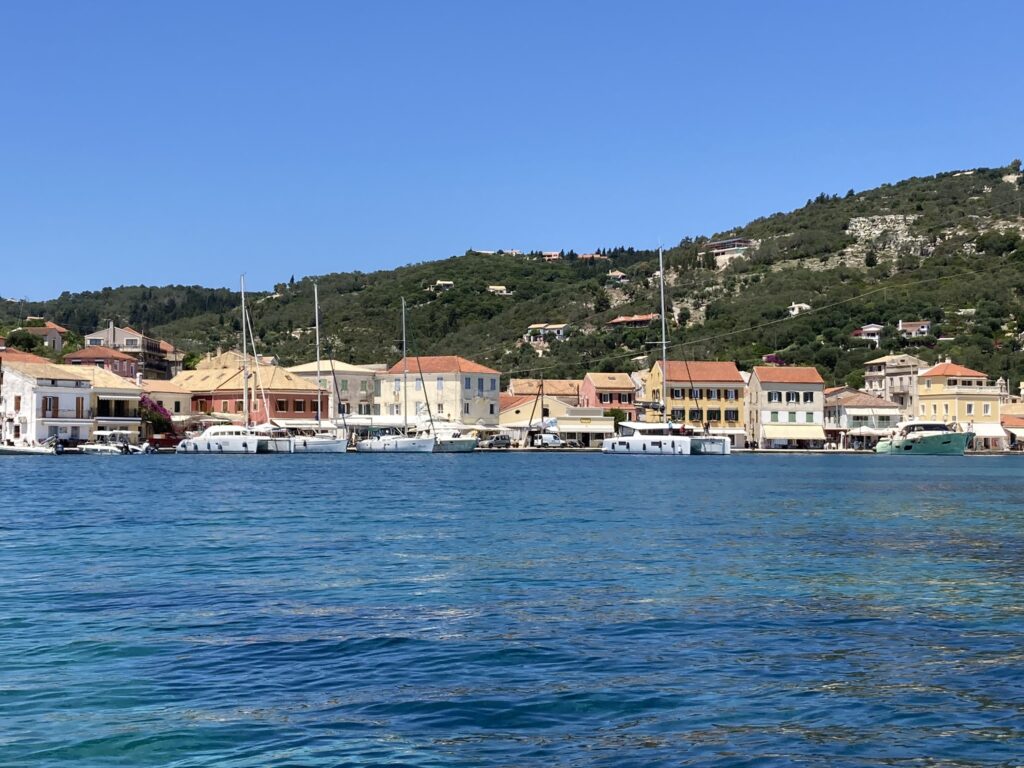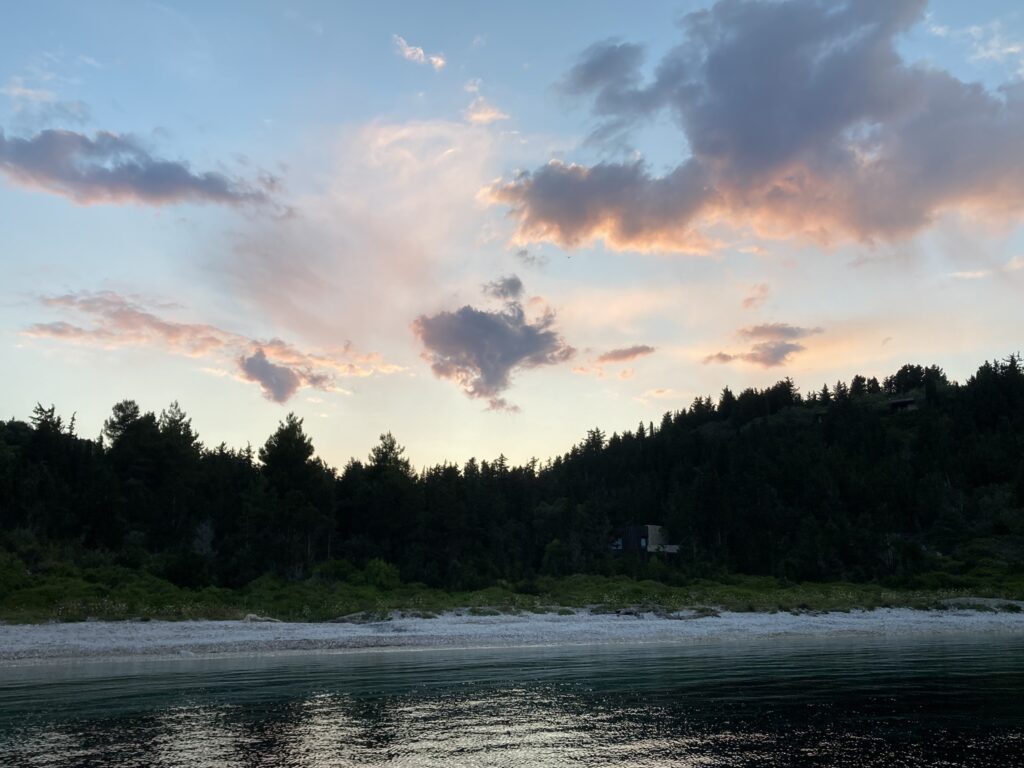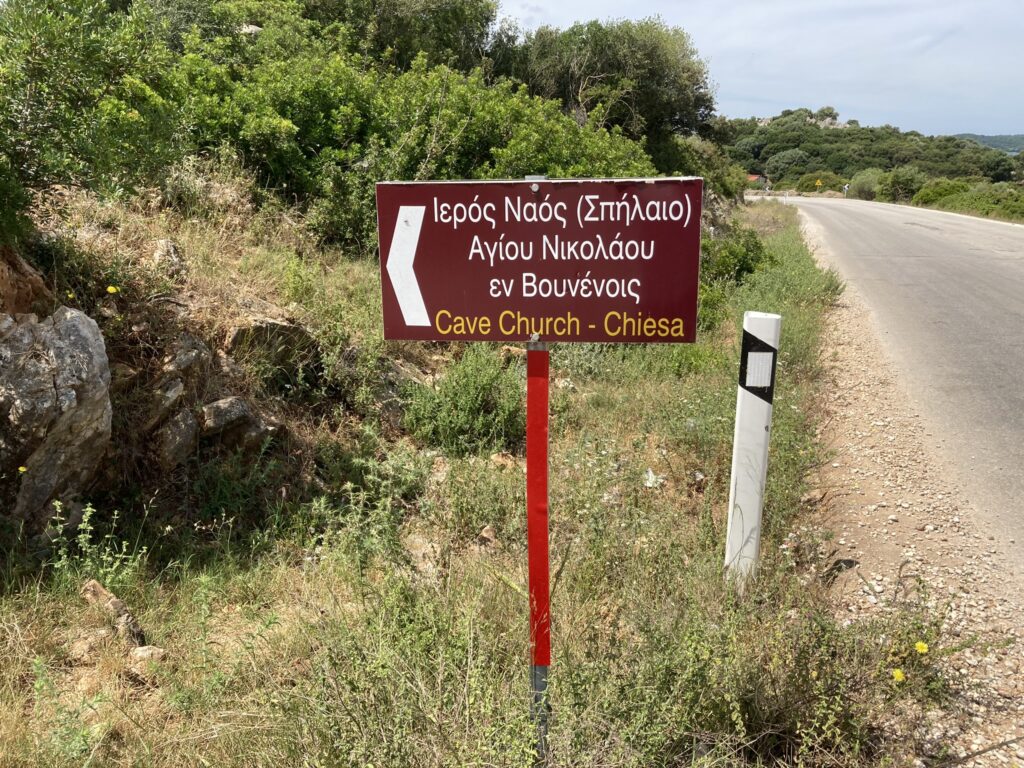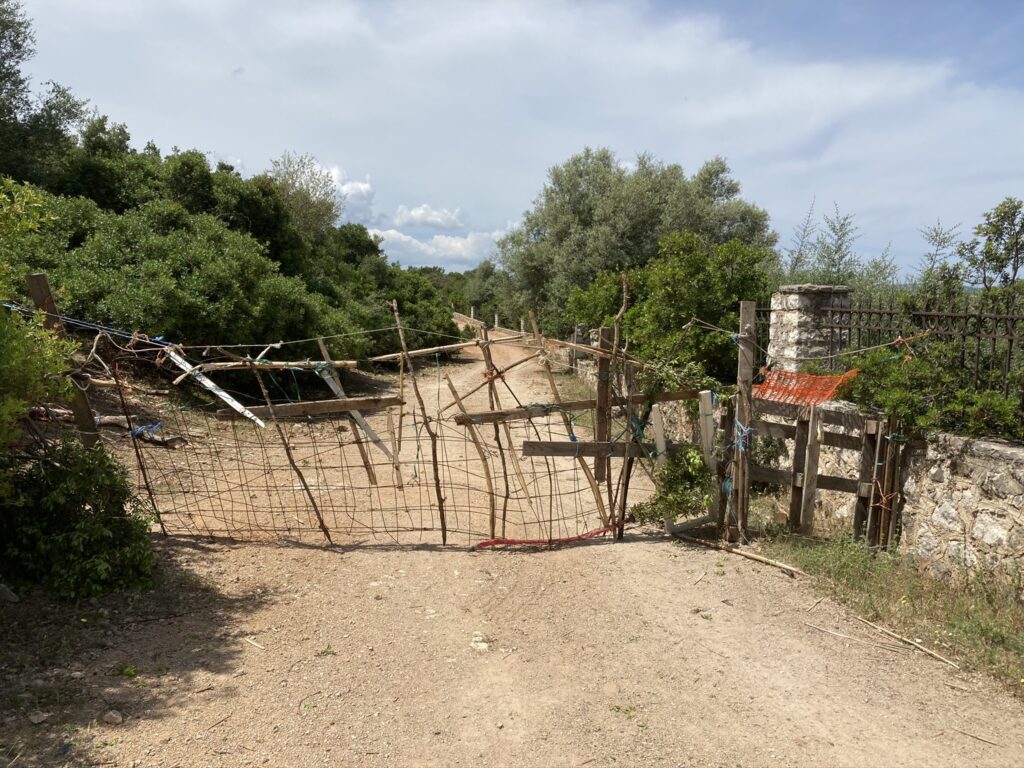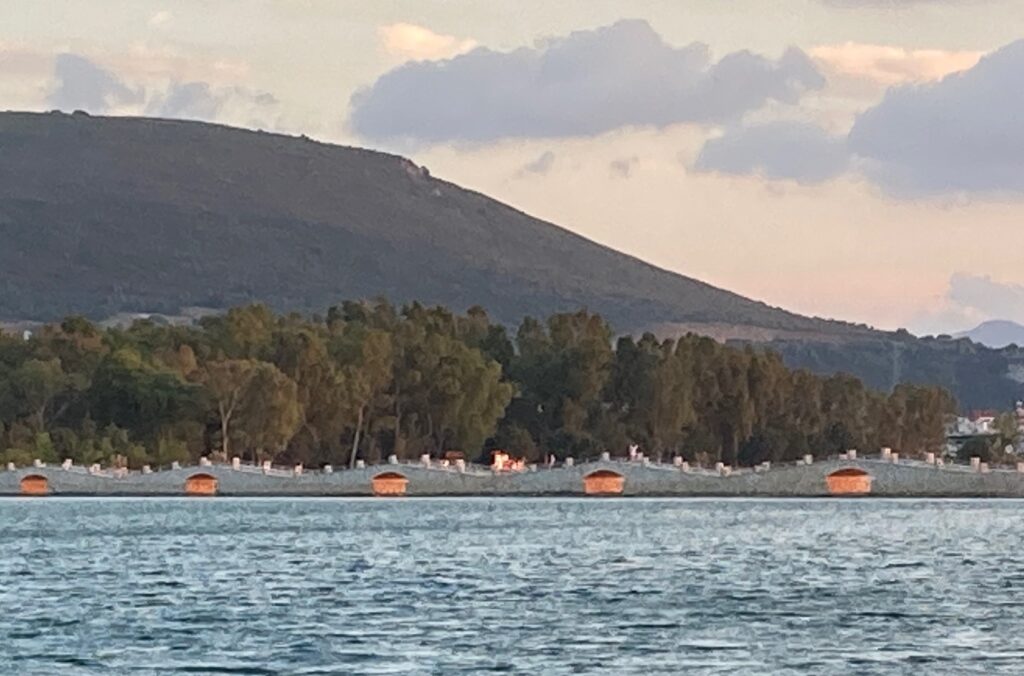Monday 9 – Sunday 15 May
To begin a new week, we walked back into the old town to meet Mikail again before his day’s work began, as the previous evening he had very kindly offered to show us the best shopping for fresh provisions in the town. Interestingly, it turned out to be the shops we’d noted on our way to our rendezvous for the ubiquitous çay (chai) before embarking on this stock-up, and our bags were soon full of a good range of fruit and vegetables, eggs, bread, local cheeses and olives, and a few meals’ worth of meat for our carnivorous skipper.
It was almost tea time before we finally got going from our berth, hampered as we were by uncooperative marina staff who proved less than helpful in explaining their peculiar arrangements for pump-out. Eventually we made our way out between the red and green lights, and into a big sea, where we started off in a Westerly F3-4 with full main and genoa on a beam reach for the first hour. Frustratingly, thereafter the wind veered, backed and increased so we reduced sail to the staysail with the main, but on starboard tack into waves of around one metre we stalled repeatedly, so we furled the foresail and reintroduced the iron tops’l.
It took us a cold and tedious five hours to make 14 Miles into Cam Limani, and in pitch dark at 2200 we took pot luck about what the anchor landed on, ending up uncomfortably close to a gulet on his own mooring buoy, almost invisible against the shoreline. Skipper dropped the dinghy into the water to take a line ashore and secured it around a large rock, but when we tested with our usual pull back method, the anchor slipped and we had to start all over again.
Meanwhile over on the beach, a group of guys were clearing up after an evening picnic, and decided to bring their vehicle down onto the sand to speed up the packing process. Are you ahead of me here? The wheels got stuck in the soft sand, and the hard and repeated revving of the engine wafted across the water to us, along with a sharp fragrance of burning rubber.
By the time we were confident we were securely attached to the sea bed and shore, all was quiet again, and in the morning the vehicle was no more, so they must have succeeded eventually, but I can only surmise that outdoorsy, competent and overrun with initiative in any kind of Scouts/military way they definitely were not. Skipper’s final observation was “it would have been easier in daylight” – I think he spoke for all of us.
The following morning revealed a beautiful setting, but when the gulet left its dinghy on their mooring, we were practically on top of it, and anyway, we expected better shelter a further 10 Miles on to the Northwest, so we set off on another leg of motor sailing, using the mainsail for a lift: having it set, even when our course is too close to the wind, fills it enough that we sit more firmly on the water, which smooths out the waves and increases our speed just a little.
A couple of hours later we were happily settled into Körmen Adasi, with a line to a rock on the beach again, and the whole cove to ourselves. After a late lunch we paddled the dinghy over to the corner of the bay to investigate the rumoured hot spring…which turned out to be a lukewarm rock pool with occasional columns of tiny rising bubbles. Not the best jacuzzi I’ve ever sat in, but the view was fairly spectacular.
Although one other boat joined us, they maintained a polite distance, and we enjoyed two quiet days to complete a few small jobs, and for Mate to return to the dinghy cover, and enjoy a relatively long swim. In spite of sailors’ superstitions, on Friday 13 May we set off early in a light variable breeze to motor a further 10 Miles to Siğacik, which is an attractive mediaeval walled town with a distinctly Greek look. We anchored in a sheltered shallow bay, and took the dinghy to the town quay to tie up among the small open local fishing fleet.
We walked a hot and dusty track up to the ancient city of Teos, and were pleasantly surprised to find a small amphitheatre and heaps of boulders scattered across an area of around five square kilometres. According to the archaeologists, there is evidence of a harbour, an acropolis at the top of a hill, and a temple to Dionysus, but our visit revealed evidence of excavation in organised groupings of columns and sections of carved lintels, rather than obvious ruins lying where they fell during earthquakes and years of neglect or lack of habitation. A colourful flock of goats was ushered languorously through the site, adding to the pastoral charm and the impression of contemporary rural life continuing among the ancient stones.
Returning to the walled town, we wandered along narrow alleyways designed to appeal to cruise ship tourists, and struggled to find basic food provisions. We chatted with the friendly marina staff about a possible Winter berth, but soon decided it has too many cons and not enough pros to be suitable.
Starting early again on Saturday morning, we began a run of all day motoring in very light winds. Last Autumn we passed this way from Chios in Greece to Çeşme in Turkey, where we purchased a new dinghy. This time we continued North to anchor for the night in a narrow bight that appeared to be the base for the local fish farming industry vessels, Egri Limani. The highlight of the day was a brief glimpse of a dolphin.
On Sunday we hit repeat and covered another 50+ Miles, following the channel between Lesbos and the Turkish mainland, as far as Ayvalik. Today’s wildlife spot was a turtle. At the end of a very tedious weekend of constant engine noise but good progress, we ended up in the beautiful ‘lake’ of almost enclosed water that is Kumru Koyu, in this mini archipelago that offers a perfect rest point between Izmir and the beginning of the Dardanelles channel, where we enjoyed a very peaceful, sheltered night.
